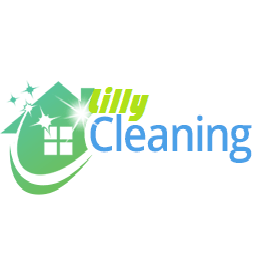The decision to use green cleaning products versus general-purpose cleaning products depends on your priorities regarding health, environmental impact, efficacy, and cost. We carry both types of products and the type we use depends on your preference.
Here’s a breakdown to help you decide:
- Health Impacts: General Purpose Cleaning Products: Often contain harsh chemicals like ammonia, chlorine, phthalates, parabens, and volatile organic compounds (VOCs). These can cause headaches, eye, nose, and throat irritation, skin allergies, and respiratory issues, especially for those with asthma. Regular exposure can potentially lead to more severe long-term health problems, including increased risk of asthma and lung damage (some studies suggest it can be as harmful as smoking). Children and pets are particularly vulnerable due to their smaller size and proximity to cleaned surfaces.
Green Cleaning Products: Generally made with natural, plant-derived, non-toxic, and biodegradable ingredients. They are less likely to release harmful VOCs, improving indoor air quality and reducing the risk of allergic reactions, respiratory problems, and skin irritation. “Fragrance-free” green products emit even fewer VOCs.
- Environmental Impacts: General Purpose Cleaning Products:
Water Pollution: Many chemicals are not biodegradable and can accumulate in soil and waterways, harming aquatic life and ecosystems.
Air Pollution: VOCs contribute to outdoor air pollution and can damage the ozone layer. Manufacturing processes often involve burning fossil fuels, leading to significant carbon emissions.
Waste: Often come in non-recyclable packaging, contributing to landfills.
Resource Depletion: May use ingredients from non-renewable sources.
Green Cleaning Products:
Biodegradable: Break down into harmless substances, reducing their impact on ecosystems and water pollution.
Reduced Emissions: Manufacturing processes often involve renewable resources and generate fewer greenhouse gas emissions.
Sustainable Packaging: Often packaged in recyclable or biodegradable materials.
Water Conservation: Some green cleaning methods and concentrated formulas can reduce water consumption.
- Efficacy: General Purpose Cleaning Products: Are often very effective at cleaning and disinfecting due to their strong chemical formulations. For deeply ingrained stains or industrial-level grime, they might have an edge.
Green Cleaning Products: Advances in green chemistry have led to eco-friendly products that are often just as effective as conventional ones for most household dirt, grime, and bacteria. Natural ingredients like vinegar, citric acid, and essential oils have proven cleaning and antimicrobial properties. However, for specific disinfection needs, especially in healthcare settings, it’s crucial to ensure the green product has validated efficacy against bacteria, viruses, or fungi (look for EPA or DIN registered disinfectants, which may or not be “green” certified for other attributes).
- Cost: General Purpose Cleaning Products: Often have a lower upfront cost.
Green Cleaning Products: While some green cleaning products might appear more expensive per bottle, they are often concentrated, meaning a smaller amount is needed for the same job, leading to long-term savings. They can also lead to fewer health-related costs (medical expenses, sick days) due to reduced exposure to harmful chemicals, and can extend the life of surfaces and carpets by being gentler.
Conclusion:
For most everyday cleaning needs in a home or office, green cleaning products are generally the recommended choice. They offer significant benefits for human health, indoor air quality, and the environment without sacrificing efficacy for typical cleaning tasks. While the initial cost might sometimes be slightly higher, the long-term benefits for your well-being and the planet often outweigh this difference.
If you have specific, heavy-duty cleaning or disinfection requirements (e.g., healthcare settings), it’s important to ensure that any cleaning product, green or conventional, meets the necessary efficacy standards. The choice is yours, just let us know if you prefer the one over the other.
